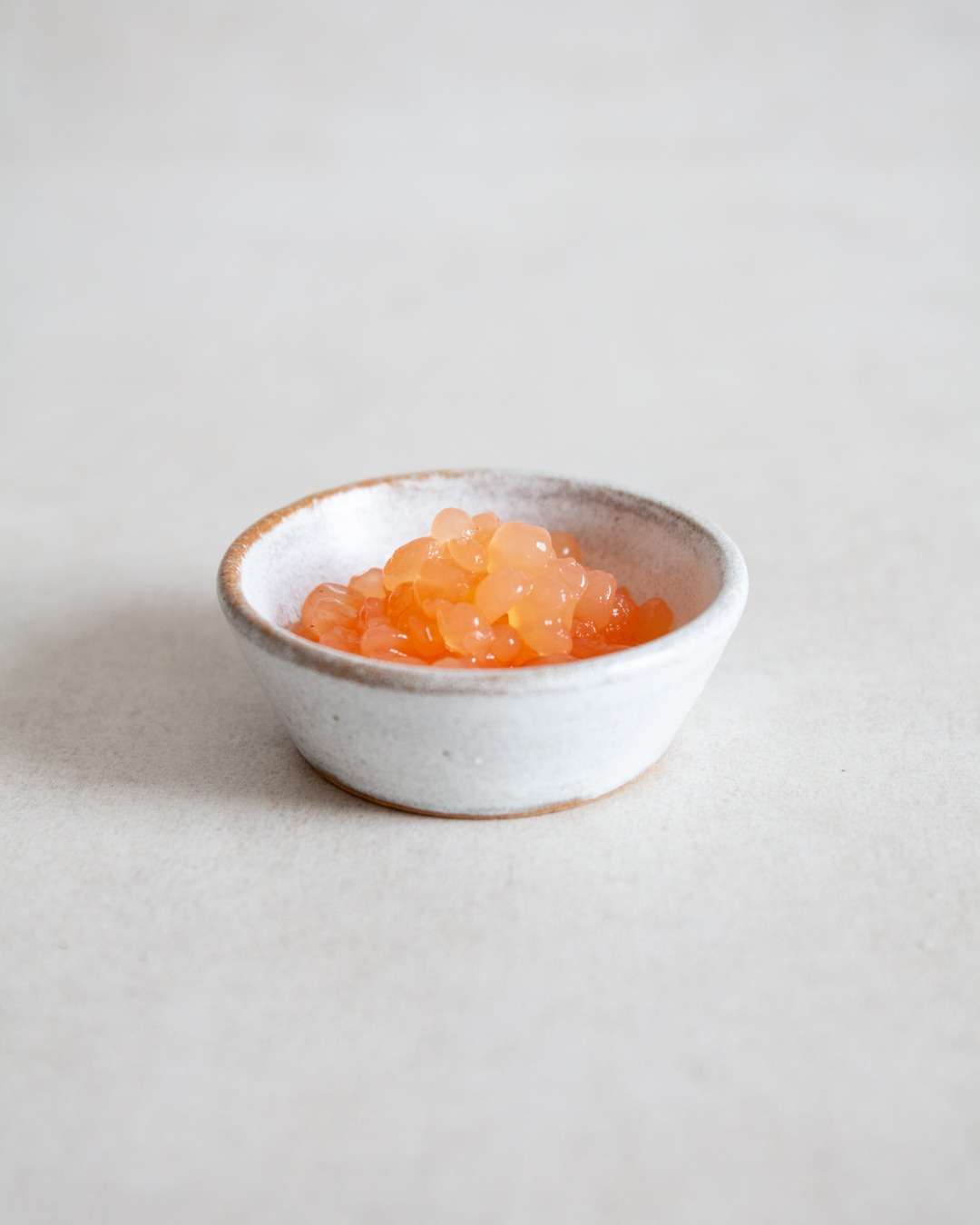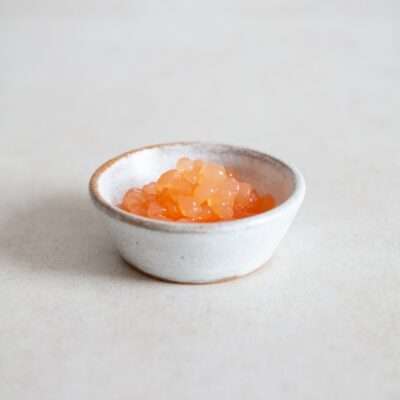Fruit Pearls

The finished pearls make an excellent garnish on desserts and will add a pop of colour and subtle flavour.
What are agar flakes?
Agar, also known as agar-agar, is a jelly-like substance that is derived from seaweed, specifically red algae. The seaweed is boiled, then strained and dried, resulting in thin, translucent flakes. Agar flakes have a neutral flavour and are often used as a thickening agent in sauces or desserts like jelly.
Which fruit juice can you use?
You can use any fruit juice (without pulp) to make fruit pearls. Acidity impacts how well the agar gelatinises the juice, so add a little more for more acidic juice and a little less for sweeter ones.
Want to try it with something else? You can also make Balsamic Pearls.
Storage
You can store fruit pearls in an airtight container in the fridge for up to 5 days.
Ingredients
-
120ml grapefruit jucie (1 grapefruit)
-
2g agar flakes (1 tsp)
-
200 ml olive oil (don’t worry, you can reuse it afterwards)
Method
Cut the grapefruit in half and squeeze out the 120 ml juice. Add it to a small saucepan along with the agar flakes and leave them soak a little.
Pour the olive oil into a jar or glass and place it in the freezer for 30 minutes.
After 20 minutes, bring the grapefruit juice to a boil without stirring it at all. Then simmer for another 5 minutes, now stirring regularly, until most of the flakes have dissolved. Strain the liquid through a small sieve to catch any remaining agar flakes and let it cool slightly until the olive oil is ready.
When the 30 minutes are up, remove the jar of oil from the freezer. Fill a pipette with the juice mixture and add droplets of it to the cold oil. The pearls will form immediately as they sink to the bottom of the jar. Once you’ve used all of the juice, strain the pearls into a fine sieve (you can still use the oil in cooking). Then store them in a small airtight container in the fridge, ready to use.
Storage: Keep in an airtight container in the fridge for up to 5 days.

Fruit Pearls
Ingredients
- 120 ml grapefruit jucie 1 grapefruit
- 2 g agar flakes 1 tsp
- 200 ml olive oil don’t worry, you can reuse it afterwards
Instructions
- Cut the grapefruit in half and squeeze out the 120 ml juice. Add it to a small sauce pan along with the agar flakes and leave them soak a little.
- Pour the olive oil into a jar or glass and place it in the freezer for 30 minutes.
- After 20 minutes, bring the grapefruit juice to a boil without stirring it at all. Then simmer for another 5 minutes, now stirring regularly, until most of the flakes have dissolved. Strain the liquid through a small sieve to catch any remaining agar flakes and let it cool slightly until the olive oil is ready.
- When the 30 minutes are up, remove the jar of oil from the freezer. Fill a pipette with the juice mixture and add droplets of it to the cold oil. The pearls will form immediately as they sink to the bottom of the jar. Once you’ve used all of the juice, strain the pearls into a fine sieve (you can still use the oil in cooking). Then store them in a small airtight container in the fridge, ready to use.

What should be the texture of the fruit caviar? Is it gonna be like a gelatin?
Exactly, they are quite delicate!
Can you use agar powder instead of flakes?
Absolutely! 2g (1/2 tsp) of the powder should do the trick (1/2 tsp)